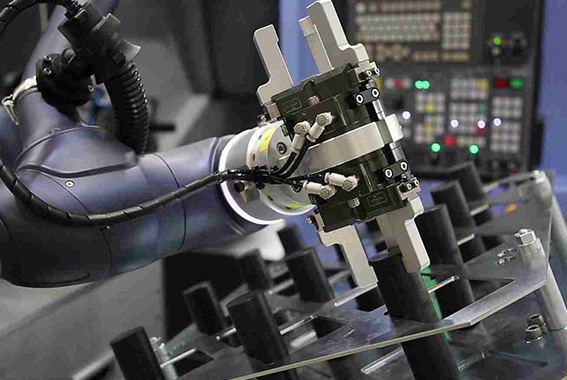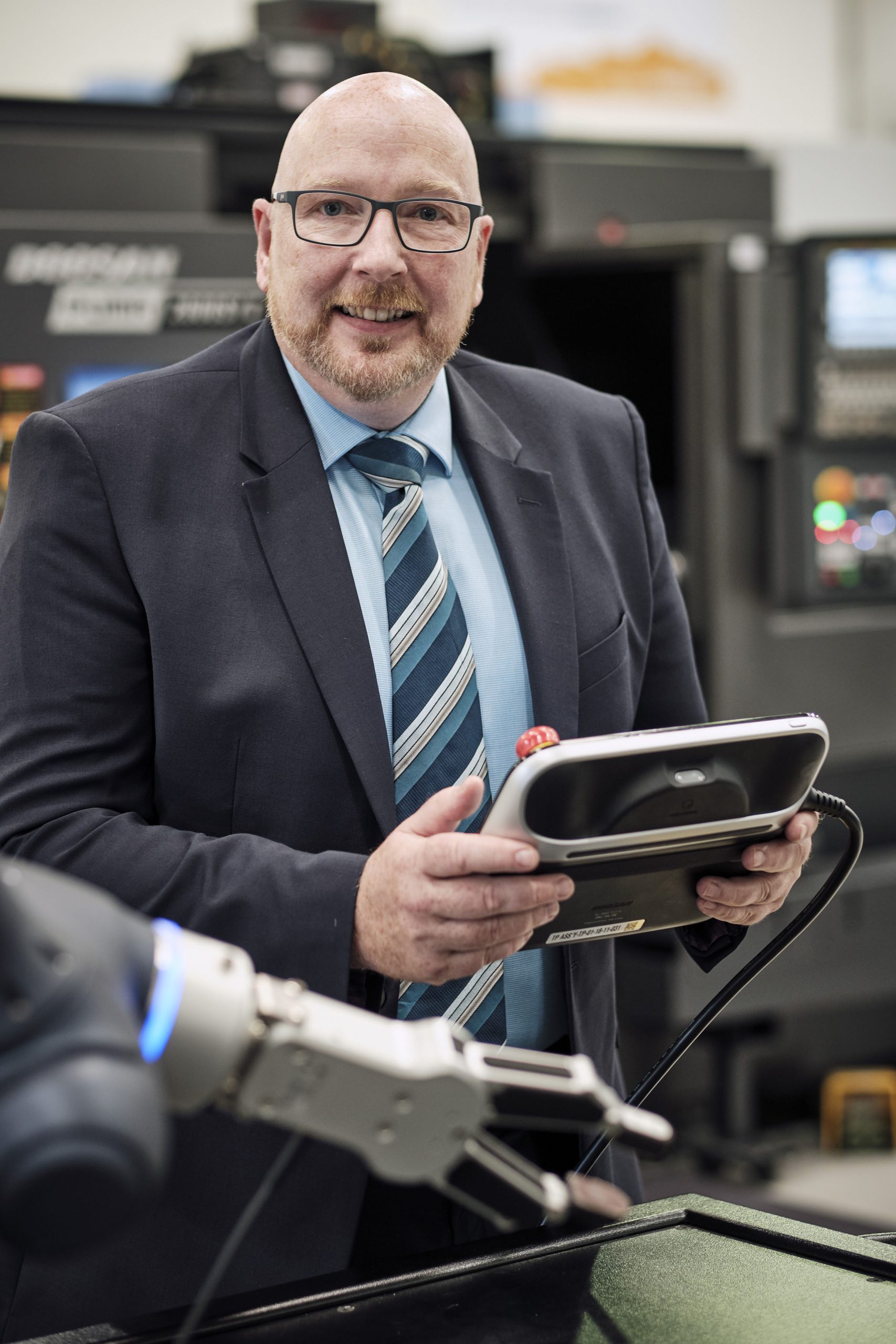
The coronavirus outbreak has raised the profile of automation and how it can lend a helping hand to component manufacturers struggling to cope with the impact and effects of the pandemic.
Whilst some manufacturers may be waiting for the lockdown to be lifted before they fully explore automation’s potential in their workplaces. Others have ‘bitten the bullet’, and are actively investigating how automation, and specifically robotics, can help them remain productive and profitable now…and in the future.
Prior to making any investment in robotics manufacturers need to make some fundamental decisions – one of the most important being the type of robotic system that’s right for them.
In this article Peter McCullough, Product Manager (Doosan Robotics), explains the differences between Industrial and Collaborative robot technology, for those manufacturers preparing to take the plunge.

“In the post-pandemic world manufacturers, across all industries and sectors, will no doubt be exploring the potential of automation and robotics and whether they are an investment worth considering.
“If and when they do they’ll be faced, early on, with an important question: What type of robot is right for my operation and application?
“Most component manufacturers will have external partners and suppliers (as well as in-house resources) who can help guide or even spec the system but, even if that’s the case, it’s a good idea to have a baseline understanding of the technologies and terms involved to help navigate the waters and ask to right questions.
“The first decision is a fundamental one: Industrial vs. Collaborative robots?
“Industrial robots are what most people imagine when envisioning a robot on the shop floor – a big, heavy robot, caged off toiling away welding car chassis after car chassis twenty four hours a day with no worker in sight. These ‘industrial’ robots complete dull, dangerous and repetitive tasks quickly and more accurately than workers ever could.
“Collaborative robots (cobots) are a more recent development where robots work alongside humans rather than replacing them. Cobots, like their industrial counterparts, are designed to perform receptive, monotonous or error-prone tasks – freeing-up time for an operator to devote to more complex, creative and value-adding tasks.
“It is estimated that by 2025 cobots will comprise 34% of total robot sales, and these estimates were provided before the coronavirus outbreak. (Much of this growth is anticipated to occur from those SME companies who, operating in High-Mix/Low-Volume (HMLV) production environments, realise the flexibility and productivity-boosting potential of collaborative robot technology).
“For SME’s understanding the strengths and limitations of both robot types is critical to chart a successful future. Choosing the wrong type can restrict future growth and be expensive; choosing the right course can ensure more efficient production processes and reduce costs immediately and long into the future.
Robots: Speed and power
“One of the main advantages of industrial robotics is the speed they can perform complex tasks, and the payloads they can handle: both exceed that of cobots. Because industrial robots are often integrated into more specialised manufacturing systems than cobots – they can deliver significant productivity gains.
“However, because of the speed and force provided by industrial robots, substantial safety systems are required to ensure that safety is maintained. The integration of such powerful systems – and the safeguards required – come with a higher price tag than cobots.
Cobots: Enhanced abilities
“Although cobots operate at lower speeds and payloads than industrial robots their (relative) low cost, inherent safety and flexibility, easy integration and operation and ‘collaborative’ nature means (application dependent of course) that they can deliver significant productivity improvements and a fast return on investment.
“The innovation in the cobot sector, not just from system manufacturers, but also from accessory, software and end-of-arm tooling suppliers has widened their appeal and application potential.
“The capability and acceptance of cobots is clearly increasing, and as countries emerge from coronavirus lockdowns and work restrictions, it is likely that adoption and use of the technology will grow exponentially.
Making the right choice
“So, how can you determine whether an industrial robot or collaborative robot is best for your manufacturing operations?
“The first step is to determine exactly what you want to accomplish – be it increased production and output, increased worker safety, reduced scrap levels etc. – and where you intend (i.e which part of your operation) to deploy your automation system.
“Next talk to organisations and experts who can help you realise your objectives, and offer sound and insightful advice.
“(Here at Mills CNC Automation we can supply manufacturers with tried and trusted industrial and collaborative robot systems and solutions – and both can be seen in action at our Technology Campus facility in Leamington).
“Lastly undertake an audit to see which robot solution makes the best financial and operational sense for your needs – now and in the future.”
